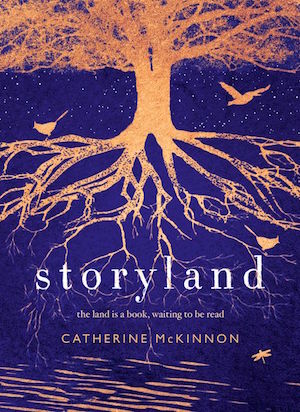Non-fiction – hardcover; 4th Estate; 288 pages; 2023.
Self-help books, even if they are about creativity (one of my pet subjects), aren’t normally my cup of tea, but when I picked up Holly Ringland’s The House That Joy Built in my local independent bookshop, attracted by its beautiful cover, I started to read the first page — and was hooked.
Many of you may be familiar with the author, who is Australian and grew up in Queensland. She has two international bestselling novels to her name — The Lost Flowers of Alice Hart (which has been adapted for TV) and The Seven Skins of Esther Wilding — but I haven’t read either of them.
The book is a clarion call to just do that creative thing — write a book, design a garden, draw a picture, knit a jumper — that you have always wanted to do but keep putting off, because you’re scared of failing or think you don’t have the time or are just waiting for the right circumstances.
In fact, Holly’s advice could be boiled down to a simple sentence: feel the fear and do it anyway.
The urge to create
In her opening chapter, she says The House That Joy Built is aimed at anyone with a creative urge “at any stage of development and engagement”.
It’s for writers, but it’s also for gardeners, carpenters, sculptors, jewellery-makers, yoga teachers, fashion designers, florists, songwriters, dancers, cooks, painters … anyone with a desire to create but who, like me, sometimes stumbles to engage with that desire because of fear. Fear of feeling afraid, of vulnerability, of criticism and judgement of others, of shame, of facing the past, of facing ourselves, of not being good enough, of not having enough, of having ‘bad’ ideas, of having ‘good’ ideas, of being ‘too much’. That is who this book is for — those who are stuck creatively, who long to create but don’t know how to find a way into, or back to, their imagination.
The book expertly marries memoir with hard-won advice and is easy to read and engaging. I was worried it might be riddled with new age/wellness/spiritual drivel, sending my bullshit detector into overdrive, but it’s very much based on first-hand experience and feels authentic.
And Holly is always quick to point out that what works for her, may not necessarily work for you, stating that “none of this is prescriptive”. It’s that kind of self-awareness I appreciate.
This isn’t a how-to book. Neither is it a workbook full of exercises. It’s not a step-by-step guide to creative writing, or writing a novel, or being a ‘good’ writer, or becoming any kind of artist. It is not written by a neurological, behavioural or social science expert. This book doesn’t assume that we have the same circumstances, come from the same childhoods or backgrounds, or have equal privilege and opportunities.
Interconnected essays
There are eight chapters, each of which explores a particular type of fear and reads like a standalone essay (there’s a helpful endnotes section where all her sources are carefully cited).
Although it’s clearly been written with an overarching narrative in mind (that is, the essays are connected), you don’t necessarily have to read it in order — you could simply cherry-pick the bits you were most interested in:
- Fear + Play
- Self-doubt + self-compassion
- Failure + nothing is wasted
- Procrastination + presence
- Inner critic + inner fan
- Outer critic + resilience
- Creative block + daydream machine
- Imposter syndrome + you belong here
At the end of each chapter is a page of questions — which are called Provocations — for reflection. Admittedly, I baulked at this, but I appreciate some readers might find them useful.
A friendly guide
Overall, it’s a well-researched book, full of insight and personal knowledge. It’s upbeat and inspiring.
It’s occasionally repetitive (that is, we are told the same thing multiple times but in slightly different ways) and sometimes strays into pop psychology. There’s also a tendency to wear its sincerity too obviously on its sleeve. But I liked the intimate tone, almost as if Holly is a friend letting you in on some big secrets.
If I learned anything from The House That Joy Built it is this: creating things is good for us, but we have to make the time and effort to do it (a bit like maintaining this blog for almost 20 years). We should never feel guilty about creating things. Or, as Holly puts it:
Giving ourselves permission to create and to revel in the joy of creating is a powerful act of resisting cynicism and scarcity. To choose to make art when there’s so much grief, despair, suffering, cruelty and tragedy in the world is to choose to connect with the best parts of ourselves and each other as humans.




















